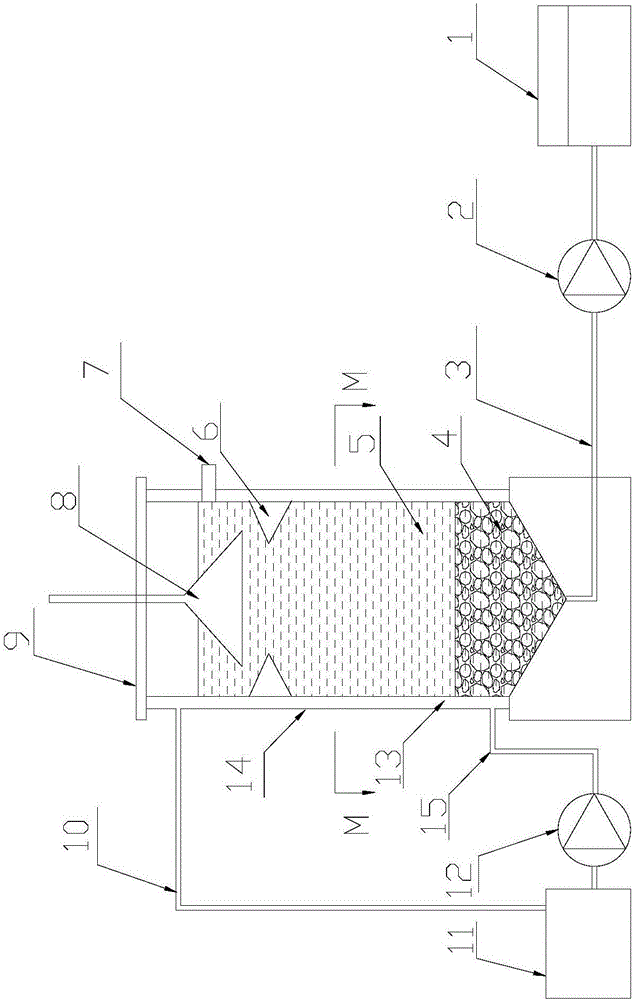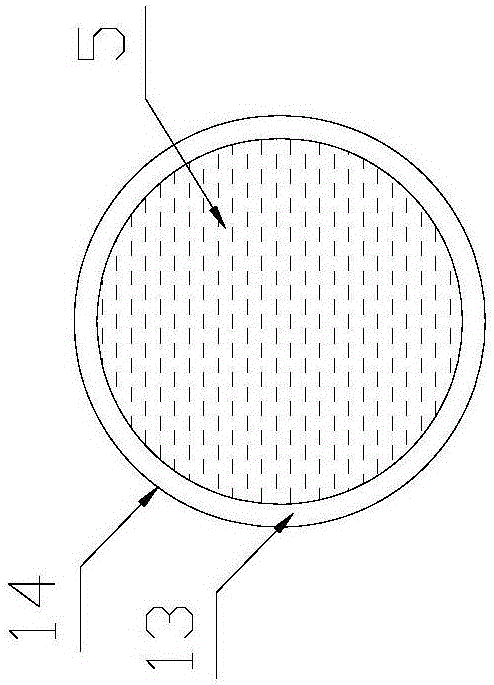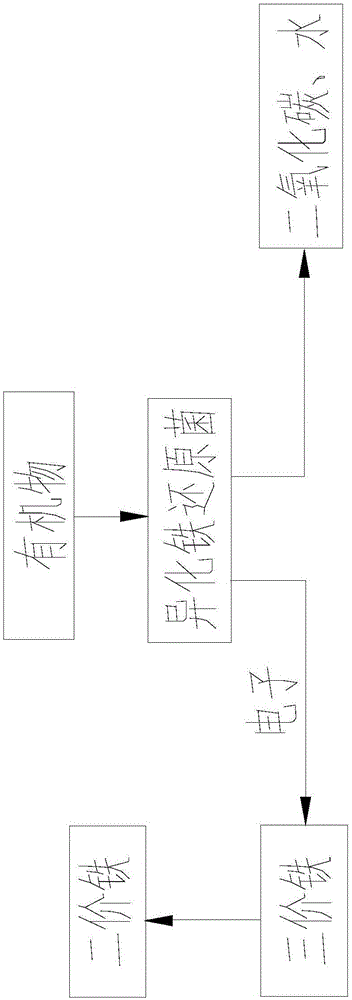Process and device for treating Fenton iron mud by anaerobic microorganisms
An anaerobic microorganism and anaerobic sludge bed technology, which is applied in anaerobic digestion treatment, biological sludge treatment, biological water/sewage treatment, etc., to achieve the effect of enhancing efficiency and increasing production
- Summary
- Abstract
- Description
- Claims
- Application Information
AI Technical Summary
Problems solved by technology
Method used
Image
Examples
Embodiment Construction
[0021] (1) The application mechanism involved in the present invention is the reduction mechanism of dissimilated iron, and the reduction mechanism of dissimilated iron is as follows: image 3 As shown, the life metabolism process of microorganisms needs respiration. The life metabolism of dissimilatory iron-reducing bacteria uses organic matter as the electron donor, ferric iron as the electron acceptor, and transfers electrons to the trivalent iron while oxidizing the organic matter into carbon dioxide and water. Iron, which reduces ferric iron to divalent iron, and in this process obtains energy for life growth. Compared with other anaerobic microorganisms, dissimilatory iron-reducing bacteria have a stronger ability to decompose and transform organic matter, especially macromolecules and refractory substances. The small molecules produced by the degradation of macromolecules can be used by methanogens to generate methane for energy recovery. Adding Fenton iron slime as a s...
PUM
 Login to View More
Login to View More Abstract
Description
Claims
Application Information
 Login to View More
Login to View More - R&D
- Intellectual Property
- Life Sciences
- Materials
- Tech Scout
- Unparalleled Data Quality
- Higher Quality Content
- 60% Fewer Hallucinations
Browse by: Latest US Patents, China's latest patents, Technical Efficacy Thesaurus, Application Domain, Technology Topic, Popular Technical Reports.
© 2025 PatSnap. All rights reserved.Legal|Privacy policy|Modern Slavery Act Transparency Statement|Sitemap|About US| Contact US: help@patsnap.com



